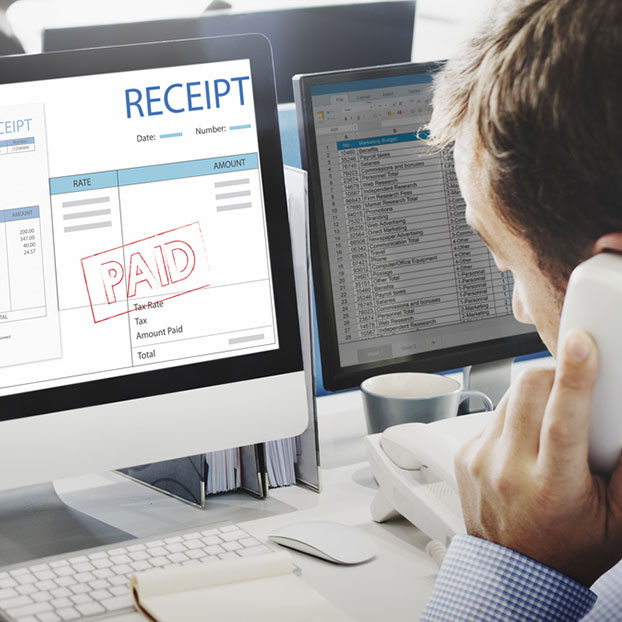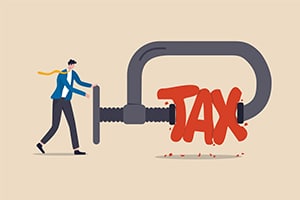
Business Advisory Services
Everything you need to help you launch your new business entity from business entity selection to multiple-entity business structures.
Hey - Our site just had a makeover and we are sorting through the hiccups!
Hey - Our site just had a makeover and we are sorting through the hiccups!

Everything you need to help you launch your new business entity from business entity selection to multiple-entity business structures.

Designed for rental property owners where WCG CPAs & Advisors supports you as your real estate CPA.

Everything you need from tax return preparation for your small business to your rental to your corporation is here.

WCG’s primary objective is to help you to feel comfortable about engaging with us
Table Of Contents
![[page_title]](https://wcginc.com/wp-content/uploads/WCG-Placeholder-h-300x183-1.jpg)
 On August 8, 2018, the IRS published proposed regulations to help better explain the Section 199A Qualified Business Income Deduction including anti-abuse rules (yes, we are always gaming the system… just like in the backyard with cops and robbers). One of the areas that was addressed was SSTBs which is the acronym for specified service trade or business. As you might recall Section 199A comes from the Tax Cuts and Jobs Act of 2017, and was designed as the small business answer to the massive tax cut for big business.
On August 8, 2018, the IRS published proposed regulations to help better explain the Section 199A Qualified Business Income Deduction including anti-abuse rules (yes, we are always gaming the system… just like in the backyard with cops and robbers). One of the areas that was addressed was SSTBs which is the acronym for specified service trade or business. As you might recall Section 199A comes from the Tax Cuts and Jobs Act of 2017, and was designed as the small business answer to the massive tax cut for big business.
Let’s recap the Section 199A deduction. Basically it is an individual income tax deduction that is calculated by taking the lessor of 20% of net qualified business income or 20% of tax return taxable income (Form 1040). There are limits applied with W-2s and depreciable assets, plus income limits. Please see our wonderful Section 199A summary here-

Find helpful insights, summaries, and resources to understand this important tax benefit.
Please recall that the Section 199A deduction is a tax deduction that does not require any economic outlay by an individual or a business; it simply occurs because a business exists. Pretty cool. Let’s further recap some fun acronyms-
| QBID | Qualified Business Income Deduction |
| SSTB | Specified Service Trade or Business |
| UBIA | Unadjusted Basis Immediately After Acquisition |
| TCJA | Tax Cuts and Jobs Act of 2017 |
The Federal Register, Volume 83, Number 159 details the proposed regulations from the IRS. Here is a summary of the document-
This document contains proposed regulations concerning the deduction for qualified business income under section 199A of the Internal Revenue Code (Code). The regulations will affect individuals, partnerships, S corporations, trusts, and estates engaged in domestic trades or businesses. The proposed regulations also contain an anti-avoidance rule under section 643 of the Code to treat multiple trusts as a single trust in certain cases. This document also provides notice of a public hearing on these proposed regulations.
Here is the technical jargon for the source of Section 199A-
Section 199A was enacted on December 22, 2017, by § 11011 of ‘‘An Act to provide for reconciliation pursuant to titles II and V of the concurrent resolution on the budget for fiscal year 2018,’’ Public Law 115–97 (TCJA), and was amended on March 23, 2018, retroactively to January 1, 2018, by § 101 of Division T of the Consolidated Appropriations Act, 2018, Public Law 115–141, (2018 Act). Section 199A applies to taxable years beginning after 2017 and before 2026.
The button below is the PDF version of the Federal Register that details the Proposed Regulations 1.199A-

Lorem ipsum dolor sit amet, consectetur adipiscing elit, sed do eiusmod tempor incididunt it amet, conse ctetur adip iscing elit, sed do eiusmod tempor incididunt ut.
Let’s jump into some of the big news that came from the proposed IRS regulations updating Section 199A Qualified Business Income Deduction (QBID). This is not meant to be a technical guide or a how-to article; this is designed for readers to learn about some of the buzzwords and narrow issues surrounding Section 199A so that they can dig deeper into the particular issue concerning them. This stuff is tough, and will take tax professionals several years to gain a level of comfort.
The Section 199A proposed regulations more narrowly defines the dreaded specified service trade or business (SSTB). Everyone is losing their mind on this. We know it doesn’t make you feel any better, but being tagged an SSTB simply means your Section 199A deduction is reduced at $315,000 joint taxable income and completely phased out at $415,000. So, either a) make a bunch of money where the Section 199A doesn’t matter or b) make less money. We prefer more money.
Far too often we get people who want to work less simply to get more Section 199A qualified business income deduction; that is insane. Do you know what the marginal tax rate in 1965 was for $400,000? 91% Yes, a 9 and 1. In those days it didn’t pay to work if you only took home 9 cents on the dollar. But to not work simply to get a 20% deduction at a 26% marginal tax rate is silly. Make money people!
Here is the dirty baker’s dozen, the unlucky 13-
Not just doctors, but anyone in the provision of medical services directly to a patient. Does not include health club operators but it does include physical therapists.
Not just attorneys, but also mediators and paralegals.
Not just CPAs, but any tax return preparer, enrolled agent (EA), financial auditor and bookkeeper. Does not necessarily rise and fall on credentials, such as CPA or EA. It would be nice if the regulations called out all Colorado Springs CPAs as a) pretty cool and b) exempt from Section 199A limits because of their coolness, but it doesn’t.
Does not include analysts, economists, mathematicians and statisticians. Thank goodness, but then again how many mathematicians make over $315,000? We want that job! Hats off to John Nash and his game theory mathematics however.
Includes who you think it would include, but does not include those supporting the performing arts such as camera operators, maintenance personnel and other technicians. What does a key grip do anyway?
Here is the verbiage right from the Proposed Regulation 1.199A; the performance of services in the field of consulting means the provision of professional advice and “counsel to clients to assist the client in achieving goals and solving problems.” Note the words advice and counsel. If you can honestly say you don’t offer direct advice or counsel, then you are not a consultant. The word consultant is watered down in life. If you are not sure who you are then you are a consultant… however with Section 199A it is much more narrow. Advice and counsel… advice and counsel. Start a song Frank… love and marriage is now advice and counsel.
Also, consulting services in connection with a sale or delivery of goods does not count either. A great example is a building contractor who is offering all kinds of advice and counsel to the client in an attempt to achieving goals and solving problems. Since this advice is inextricably connected to the construction of a building, it is not considered consulting.
Sure. Got it. But be careful since it also includes coaches and team managers.
All the usual suspects but the preamble to the proposed regulations states that banking services such as taking deposits and lending money are not considered financial services. This makes sense since taking deposits and lending money is a retail activity in several ways, where advice and counsel (not those words again) specific to a client is a financial service.
Anyone who facilitates a transaction for a commission or a fee. Slow down though! The proposed regulations specifically say brokerage services do not include services provided by real estate agents and brokers, or insurance agents and brokers. Help someone sell their business, you are a service provider. Help someone sell their house, not so much. Gotta love a good lobby.
Again, the usual suspects. Does not include property management however.
Trading securities, eleven. Dealing Securities, twelve. Got it.
This is the hammer. Number 13! The direct verbiage reads, “any trade or business where the principal asset of such trade or business is the reputation or skill of one or more of its employees or owners.” This will be heavily litigated and shaped over time. This will also be the catch-all if the IRS challenges your trade or business to deem it a SSTB.
Defining a trade or business is easy for the most part, however certain activities are murky and one of them is rental properties. On one hand an argument that rental property income is already tax advantaged can be made since it is not subject to self-employment taxes (Social Security and Medicare). However, if it were subject to SE tax, people would simply create management entities, elect S Corp status, ding the rental a management fee and achieve a Section 199A deduction that way. This is perhaps one reason the IRS isn’t raising a big stink on rental properties.
Also, in Commissioner v. Groetzinger, 480 U.S. 23 (107 S.Ct. 980, 94 L.Ed.2d 25), the United States Supreme Court in 1987 held that for an activity to meet the definition of a trade or business it must be engaged to a) earn a profit and b) with some regularity and continuity. This is also most rental property owners, even if it is just one house.
And… don’t read to much into the “earn a profit.” This does not mean it must earn a profit… but your intentions for conducting the activity is to earn a profit. Whether you earn a profit or not does not necessarily alter your intentions. Make sense? In other words, “I wanna earn a profit. I’m doing all the right things to make a buck, yo, but right now times are tight and this depreciation thing is killing me.”
The IRS and the Treasury Department recognized this conundrum so they released IRS Notice 2019-7. In that Notice they defined a safe harbor for taking the Section 199A deduction for rental properties-
Solely for the purposes of section 199A, a rental real estate enterprise will be treated as a trade or business if the following requirements are satisfied during the taxable year with respect to the rental real estate enterprise:
There are some other devils in the details such as not being able to combine commercial and residential rentals into a single enterprise, and there are lease type rules as well.
Self-rentals pose an interesting situation. For example, you own some equipment personally and lease it back to your business. Provided the arrangement is at market rates, we believe this still qualifies for the Section 199A deduction as a rental business for two reasons. First, how is this any different than an external business who leases the equipment to unrelated parties? That ordinary income would qualify. Second, you are moving dollars from your right pocket to your left pocket, and absent of the SSTB designation, you are just swapping Section 199A dollars.
So, as of right now, rental property owners are able to calculate and use the Section 199A qualified business income deduction if they meet the requirements in IRS Notice 2019-7. This is also where depreciable assets come into play for determining the Section 199A limitations. No, you do not need to pay a W-2 salary from your rental property to enjoy the qualified business income deduction. We created a standalone blog on the Section 199A Trade or Business Safe Harbor for Rental Real Estate-

Lorem ipsum dolor sit amet, consectetur adipiscing elit, sed do eiusmod tempor incididunt it amet, conse ctetur adip iscing elit, sed do eiusmod tempor incididunt ut.
If you have qualified business income that would normally enjoy a Section 199A deduction, and that income is negative, it must be netted against other income. This is another cops and robbers anti-abuse provision since it would be very easy to split an entity into two, drive income way up in one, grab your Section 199A deduction, and then net the incomes together to reduce taxable income from the businesses. A double dip of sorts. Yes, you would need other income sources to ensure the taxable income Section 199A limit on the tax return is not triggered to play out this game, but the IRS eliminated the temptation.
There are some specific rules on how this works, but you get the general concern.
There are de minimis safe harbor rules on specified service trades or businesses. One is for those who have gross receipts of $25 million or less. If less than 10% of the gross receipts are generated because of an SSTB (see the 13 above), then the whole entity is not considered a specified service trade or business. No poisonous fruit stuff.
The other is 5% for those having more than $25 million in gross receipts.
This is one of the dorky accountant questions… which number on the W-2 do I use? The IRS defined three safe harbors for the use of Section 199 Domestic Production deduction back when that was a thing. Later, in IRS Notice 2018-64 released August 8, 2018, the IRS scratched in the letter A like Hester Prynne and used the same safe harbors for Section 199A. Here are the three W-2 safe harbors-
This is all very exciting. Frankly, using Box 5 in 99% of the situations out there will work just fine. Box 5 = Box 1 + Box 12. But wait! There’s more… if you are a greater than 2% shareholder you must also add self-employed health insurance (SEHI) premiums and HSA contributions to Box 5 since these are also included in Box 1. So… now you are back to Box 1 + Box 12 Code D, E, F, G and S.
More cops and robbers. If you are finding yourself limited in Section 199A qualified business income deduction because of depreciable assets (2.5% of the unadjusted cost basis right after acquisition is the calculation), you might be inclined to buy something on Dec 31 and sell it on Jan 1.
Nope. According to Proposed Regulations 1.199A-2(c)(1)(iv) if you buy qualified property within 60 days of the taxable year-end, dispose it within 120 days of purchase date, and do not enter the qualified property into service for at least 45 days, it does not count towards the Section 199A calculation.
Nice try however. Remember, IRS consultants and attorneys read tax planning articles too.
Some of these seem obvious but here are the ones that people are asking the most about-
Reasonable compensation received from an S corporation by a shareholder is not qualified business income. In other words you cannot add it back in for the Section 199A calculation. How you chop up your net business income between salary and distributions is up to you, but only the net business income after shareholder salary will qualify.
Guaranteed payments are not included. This make sense since it is similar to the reasonable S Corp compensation argument above.
Short-term and long-term capital gains. This too makes sense since these are already tax-advantaged and reported separately on a K-1.
Section 1231 gains and losses (fancy word for depreciable assets used in a business that are held for over a year, and later sold). Here’s a chili pepper on this- If net Section 1231 is a gain, it is excluded from Section 199A. If net Section 1231 is a loss, it is included as a reduction in qualified business income. That is the rule for now.
Dividends and interest are not included unless interest is being earned on an account receivable that is connected with the sale of goods or services.
There are some other odd-duck ones, but those are the biggies.
There are provisions for aggregating multiple business under common control or ownership (similar to controlled group rules). This might be to your advantage since you must compute Section 199A limitations for each business entity prior to adding them together. Therefore, if you are being limited in one entity based on W-2 Section 199A limits, then you can “rob” W-2 wages from another entity. There are all kinds of rules and technical issues of course.
Entities, such as partnerships and S corporations, cannot make this election since Section 199A is an individual deduction on an individual tax return. Specified service trades or business cannot be part of a Section 199A aggregation; so a online retailer who is also an attorney cannot aggregate the entities.
The aggregate business entities must meet the ownership or control rules. Makes sense, but they also must satisfy at least two of the following factors-
Just like Meatloaf… 2 out of 3 ain’t bad. This will be very complicated very quickly. Good luck!
Also keep in mind that the Section 199A deduction is limited on two levels; the entity level and the individual’s taxable income level. Huh? The first calculation is done at the entity level to determine a W-2 and / or depreciable asset limitation. These limits are later aggregated and “sent over” to the individual tax return for the partner, member or owner. The second limit is then based on the taxable income of the individual tax return (Form 1040). In other words, there are two hurdles with the Section 199A deduction and each hurdle can give a haircut to the tax deduction.
There will be some gaming of the system where employees are asking to be treated as a contractor for the purposes of grabbing the Section 199A deduction. The IRS is wise to the ways of the gamer… Proposed Regulation 1.199A-5(d)(3) reads-
Specifically, proposed § 1.199A–5(d)(3) provides that, solely for purposes of section 199A(d)(1)(B) and the regulations thereunder, an individual who was treated as an employee for Federal employment tax purposes by the person to whom he or she provided services, and who is subsequently treated as other than an employee by such person with regard to the provision of substantially the same services directly or indirectly to the person (or a related person), is presumed to be in the trade or business of performing services as an employee with regard to such services.
This presumption may be rebutted only upon a showing by the individual that, under Federal tax rules, regulations, and principles (including common-law employee classification rules), the individual is performing services in a capacity other than as an employee. This presumption applies regardless of whether the individual provides services directly or indirectly through an entity or entities.
This presumption is solely for purposes of section 199A and does not otherwise change the employment tax classification of the individual. Section 199A is in subtitle A of the Code, and this rule does not apply for purposes of any other subtitle, including subtitle C. Accordingly, this rule does not implicate section 530(b) of the Revenue Act of 1978. Proposed § 1.199A–5(d)(3)(ii) contains three examples illustrating this rule.
Partnerships (Form 1065) and S Corporations (Form 1120S) must report a bunch of additional crud on the generated K-1s. Just another tax return preparation fee hike courtesy of your Section 199A lawmakers.
Each partnership or S Corp must determine if any of its trades or businesses are specified service trades or businesses, and report this as such on the K-1. So now there is huge risk by the accounting firm preparing the K-1 for the partner or shareholder who is relying on that data for individual tax return preparation. Yes, there was always this risk, but now it is much larger since the SSTB determination will be one of the deciding factors in the Section 199A waterfall.
The K-1 will also have the partner or shareholder’s allocable share of qualified business income, W-2 wages and unadjusted basis immediately after acquisition of qualified property.
The proposed regulations are long and have many other nuances such as publicly traded partnerships (PTPs), REITS, trusts and other super technical issues which don’t apply to most small business owners. Just be aware of them, and when it triggers a Section 199A chin scratcher, then dig into the regs.
Here is our summary of the major issues recently updated by the final regulations, rental property safe harbor (Notice 2019-7) and how all this crud affects S corporations-
Jason Watson, CPA is the Managing Partner of WCG (formerly Watson CPA Group), a business consultation and tax preparation firm, and is the author of Taxpayer’s Comprehensive Guide on LLC’s and S Corps which is available online.

Learn about important tax deadlines, document checklists and due dates, and other essential tax return information.
Jason Watson, CPA is a Partner and the CEO of WCG CPAs & Advisors, a boutique consultation and tax preparation CPA firm located in Colorado, and is the author of Taxpayer’s Comprehensive Guide on LLC’s and S Corps and I Just Got a Rental, What Do I Do? which are available online and from mostly average retailers.

Learn about important tax deadlines, document checklists and due dates, and other essential tax return information.
Jason Watson, CPA is a Partner and the CEO of WCG CPAs & Advisors, a boutique consultation and tax preparation CPA firm located in Colorado, and is the author of Taxpayer’s Comprehensive Guide on LLC’s and S Corps and I Just Got a Rental, What Do I Do? which are available online and from mostly average retailers.
With state apportionment and tax return preparation, there are two issues at play- apportionment itself, and then state tax return
Table Of Contents

Tax planning season is here! Let's schedule a time to review tax reduction strategies and generate a mock tax return.

Tired of maintaining your own books? Seems like a chore to offload?
Did you want to chat about this? Do you have questions about us? Let’s chat!
The tax advisors, business consultants and rental property experts at WCG CPAs & Advisors are not salespeople; we are not putting lipstick on a pig expecting you to love it. Our job remains being professionally detached, giving you information and letting you decide within our ethical guidelines and your risk profiles.
We see far too many crazy schemes and half-baked ideas from attorneys and wealth managers. In some cases, they are good ideas. In most cases, all the entities, layering and mixed ownership is only the illusion of precision. As Chris Rock says, just because you can drive your car with your feet doesn’t make it a good idea. In other words, let’s not automatically convert “you can” into “you must.”
Let’s chat so you can be smart about it.
We typically schedule a 20-minute complimentary quick chat with one of our Partners or our amazing Senior Tax Professionals to determine if we are a good fit for each other, and how an engagement with our team looks. Tax returns only? Business advisory? Tax strategy and planning? Rental property support?

Everything you need to help you launch your new business entity from business entity selection to multiple-entity business structures.

Designed for rental property owners where WCG CPAs & Advisors supports you as your real estate CPA.

Everything you need from tax return preparation for your small business to your rental to your corporation is here.

WCG’s primary objective is to help you to feel comfortable about engaging with us
